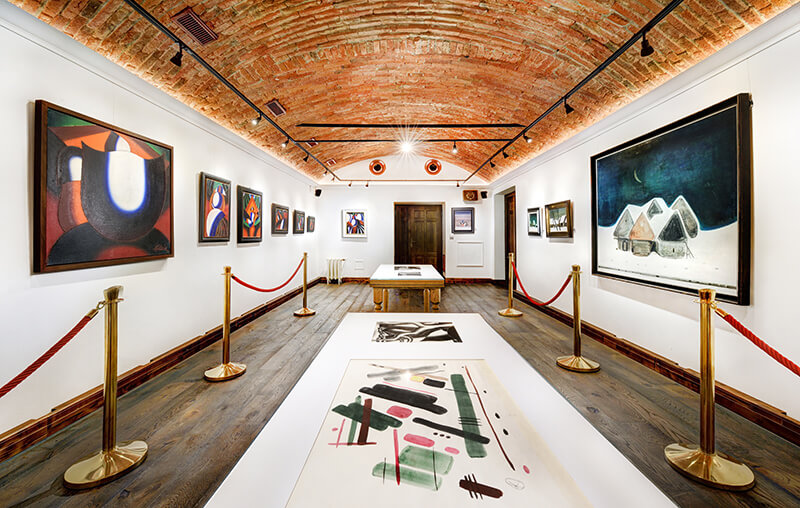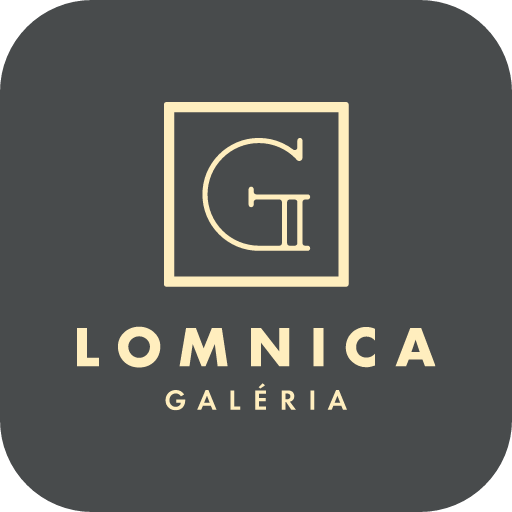Mr. Kvasnička, the Lomnica Gallery has published its third monograph focused on its own gallery acquisitions, entitled Two Forms of the Slovak Story in Painting. Could you briefly introduce it to the readers?
The dramaturgical concept of the Lomnica Gallery has its own logic, which determines and influences the meaningful character of the collection. After the presentation of the large collection of the master Jan Hala, we have processed the entire collection in the form of a comprehensive monograph and also applications that allow hotel guests and gallery visitors to better orient themselves in an environment that breathes art. Then we processed a probe into the "story of Slovak painting", where we presented those authors of classical Slovak modernism who formulated the iconography of the Slovak myth in a style-forming way (Benka, Bazovský, Alexy, Weiner-Kráľ, Mousson, Mallý and others). At the same time, we have also paid attention to two concurrent motivic lines of Slovak modernism - both in the theme of landscape painting and in the rich representation of motifs with the theme of the Slovak woman, girl, lover, wife, mother or grandmother.

Which author or work is exceptional for you within the new comprehensive exhibition in the Lomnica Gallery?
The most correct answer would be that these are two coherent and internally balanced collections of the work of Milan Laluha and Vladimír Kompánek, who are a solid part of the so-called Slovak story in painting (the Slovak myth). In the first case I appreciate the sense of colour rhythm (derived from the ethnological experience of Podpoľanie), in the second case again the unusual singing and forgetfulness when remembering the childhood in Rajec valley. If I had to choose something exceptional from each, in the case of Laluha it is the figurative composition of a Mičin woman with a "tavern" still life, in Kompánek's case I particularly admire his exuberant carnival processions with a specific folk mythology, but also the erotic themes (which are part of the instinctive basis of rural society).
However, from this defined base, you also got some other important points...
Yes, for example, the very strong generation of M. Galanda, who, after years of schematism and socialist realism, built on the interwar legacy of our first avant-garde. Moreover, in the profiles of Milan Laluha and Vladimír Kopmpánek, we also examined a peculiar circumstance - how is it possible that two masters from the same generation, from the same group, with the same academic training and the same deep relationship to patriarchal Slovakia, could have arrived at such different results. In order not to give away the answer, we refer the dear interested reader to a recent monograph on the two forms of the Slovak story in painting.

However, with the advent of online media, the book culture and general interest in reading is somehow disappearing from people's minds. The statistics are very alarming.
There are alarming scientific studies and researches coming out today on the subject of reading (or rather not reading). One need only mention Manfred Spitzer's Digital Dementia or Zimbardo's study The Disconnected Man. Not to mention the international PISA measurements, where our children's results in contextual reading comprehension and reading comprehension are truly alarming. The virtual world of smartphones flattens reality, causes shallowness of emotion, and innervates the very same neural synapses and pathways that are activated when a drug is used. Moreover, the loneliness of social networks deprives people of much-needed social contact, listening to each other and seeing each other vis à vis. But lamenting is not enough! I believe the book in print, with its unmistakable smell of printer's ink and visual appeal, will survive. Every toy will tire in time; Guttenberg's discovery will be - I firmly believe - eternal. Lomnica Gallery's publishing activity seeks to cultivate this (temporarily displaced) space.
Let's stay in the present, when graffiti (spray art), social networks, which also often spread various forms of pseudo-art, have been put on a pedestal. What do you think of these new forms of creativity and publishing?
Social networks - although I am not very familiar with their mechanisms and forms - have shortened the path from a sensation, an experience, an emotion to a person. Everything is suddenly accessible (including kitsch and trash). The experience of popular music (where mega-firms have resisted this trend to their own detriment) tells us that what cannot be beaten must be exploited - even to the benefit of presenting what the average educated person can regard as art. This can be clearly seen in the new forms that have grown out of graffiti and resulted in the current trends of street-art. Things are happening there too that we didn't suspect before. That's also why contemporary artists, if they don't want to get lost, are expanding into this area.

Was the art scene you knew in your early days in the arts more creative and proficient than today's?
The art scene in which I grew up (the normalization decades of 1970-1989) suffered primarily from ideological oppression. Many painters saved themselves with a kind of poetic civility that was impossible to stumble upon. The more daring ones got on the list of banned artists and were expelled from the Union of Slovak Artists (such a fate also befell Laluha and Kompánek). On the other hand, it must be said that the galleries had buying committees and the gallery collections were growing with new acquisitions, which to a certain extent guaranteed the existence of the artists. After 1989, these "pleasures" shrank and individualism, including daring or even pictorial aggression, became more pervasive. In any case, the measure of fine art ceased to be well-mastered craft - vision, sometimes very scandalous, began to be valued.
What specifically led you to art?
I grew up in the family of a child psychiatrist who originally went to study painting because he was very good at drawing (he eventually used this as an auxiliary force at the Anatomy Institute of the Faculty of Medicine, where he painted teaching posters with bones, muscles and tendons, etc.). Alongside his medical profession, he painted non-professionally all his life - especially paintings influenced by his psychiatric practice. Very often my father's study smelled of turpentine and my mother would "bake" him for taking off his trousers or shirt again. As boys, we would often look over his shoulders over the baton and muse. Maybe that's where I got attached to painting - emotionally, too.

